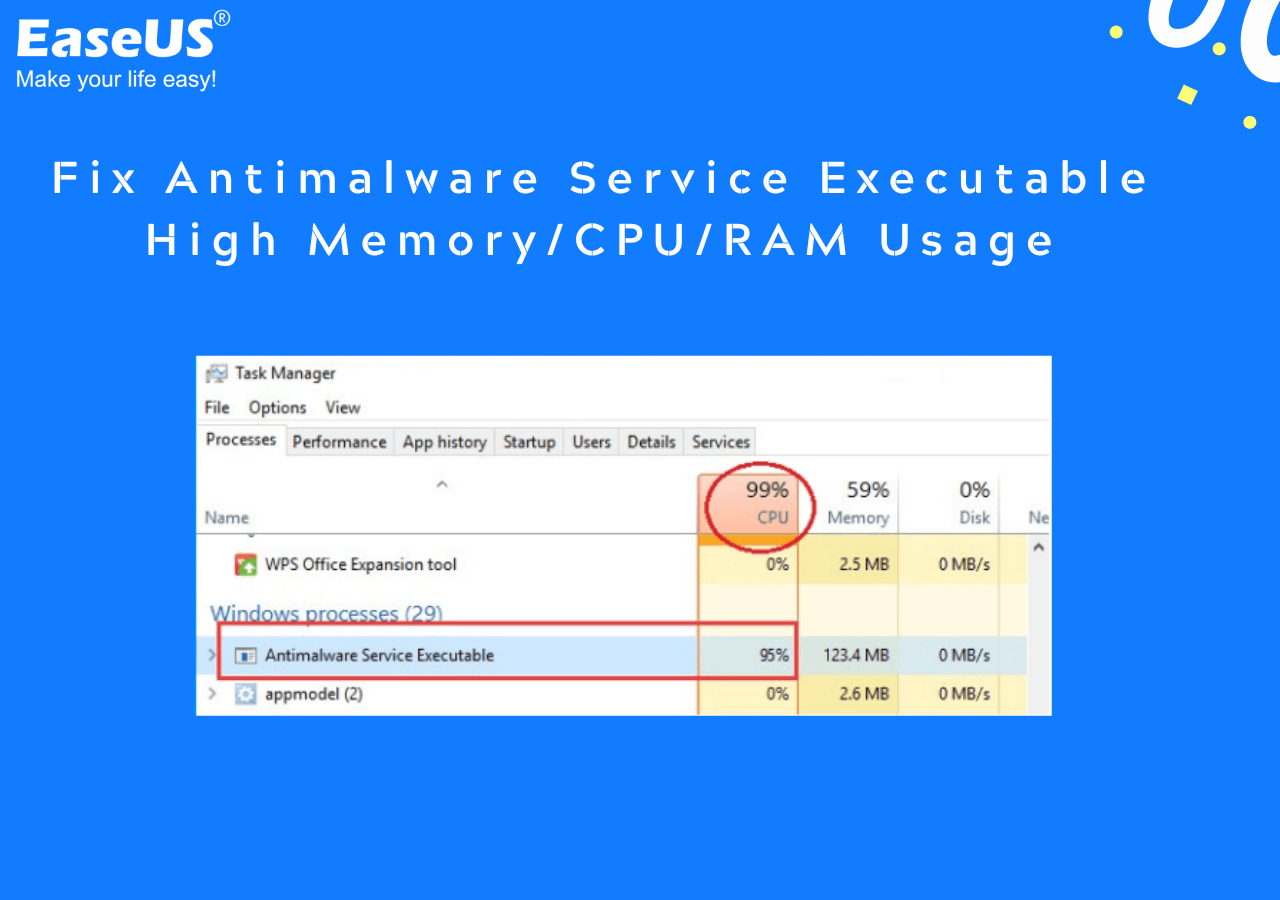Are you facing high memory usage on your computer? You might have noticed the Antimalware Service Executable. This can cause your computer to slow down. Do not worry! We will help you understand and fix this problem.
What is Antimalware Service Executable?
Antimalware Service Executable is a part of Windows Defender. Windows Defender protects your computer from viruses and malware. It runs in the background. It scans your computer for threats. Sometimes, it uses a lot of memory. This can slow down your computer.
Why does it use so much memory?
There are a few reasons why Antimalware Service Executable uses a lot of memory:
- Real-time protection
- Full system scans
- High priority tasks
Real-time protection means it is always running. It checks files as you open them. Full system scans look at every file on your computer. High priority tasks mean it tries to do its job quickly.

Credit: www.easeus.com

Credit: answers.microsoft.com
How to check memory usage
You can check memory usage using Task Manager. Follow these steps:
- Press Ctrl + Shift + Esc on your keyboard.
- Task Manager will open.
- Click on the Processes tab.
- Look for Antimalware Service Executable.
- Check the memory usage column.
How to fix high memory usage
Here are some simple steps to fix high memory usage:
1. Change Windows Defender Schedule
You can change when Windows Defender scans your computer. This way, it does not use a lot of memory when you need it. Follow these steps:
- Press Windows + R on your keyboard.
- Type taskschd.msc and press Enter.
- Task Scheduler will open.
- In the left pane, go to Task Scheduler Library > Microsoft > Windows > Windows Defender.
- In the middle pane, double-click Windows Defender Scheduled Scan.
- Click on the Triggers tab.
- Click on New.
- Set a new schedule that works for you.
- Click OK to save changes.
2. Add Antimalware Service Executable To Exclusion List
You can add Antimalware Service Executable to the exclusion list. This way, Windows Defender will not scan it. Follow these steps:
- Press Windows + I on your keyboard.
- Settings will open.
- Click on Update & Security.
- Click on Windows Security in the left pane.
- Click on Virus & threat protection.
- Under Virus & threat protection settings, click on Manage settings.
- Scroll down to Exclusions.
- Click on Add or remove exclusions.
- Click on Add an exclusion.
- Select Process.
- Type MsMpEng.exe and click Add.
3. Disable Real-time Protection
Disabling real-time protection can help reduce memory usage. But, it also means less protection. Only do this if you are sure. Follow these steps:
- Press Windows + I on your keyboard.
- Settings will open.
- Click on Update & Security.
- Click on Windows Security in the left pane.
- Click on Virus & threat protection.
- Under Virus & threat protection settings, click on Manage settings.
- Turn off Real-time protection.
4. Use A Third-party Antivirus
Sometimes, using a different antivirus can help. There are many free and paid options. Choose one that works for you. Install it and disable Windows Defender.
5. Update Your Computer
Keeping your computer up to date can help fix problems. Follow these steps:
- Press Windows + I on your keyboard.
- Settings will open.
- Click on Update & Security.
- Click on Check for updates.
- Install any available updates.
Frequently Asked Questions
What Is Antimalware Service Executable?
Antimalware Service Executable is a Windows Defender process. It protects your computer from malware.
Why Does Antimalware Service Executable Use High Memory?
It scans your system for threats. This process can use high memory during scans.
How Can I Reduce Antimalware Service Executable Memory Usage?
Schedule scans during idle times. Update Windows Defender regularly. Exclude large files from scans.
Is It Safe To Disable Antimalware Service Executable?
Disabling it can leave your system vulnerable. It is safer to adjust settings to reduce memory usage.
Conclusion
High memory usage by Antimalware Service Executable can be a problem. But, you can fix it. Follow the steps we shared. Your computer will run better. Remember to keep your computer safe from viruses. Choose the best option for you. Stay safe and enjoy using your computer!